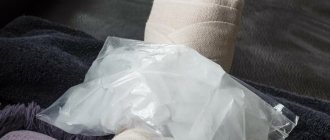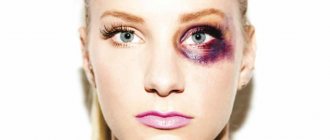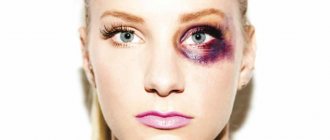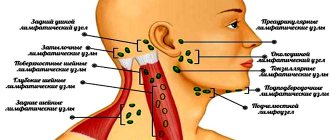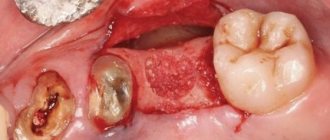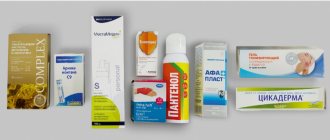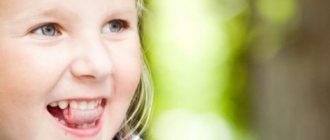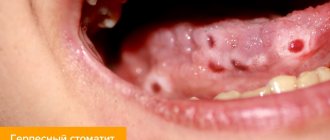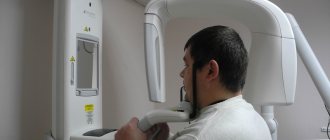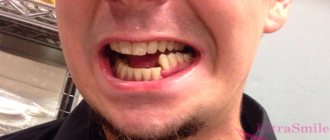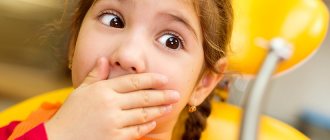No person is immune from jaw injury; the most famous pathology is jaw bruise (ICD-10 S00-S09). However, you can get injured at any age. Jaw bruises occur for various reasons: starting with disasters of varying levels of severity and ending with injuries from a blow acquired as a result of a street fight. A blow to the jaw affects the soft tissues of the face, blood arteries and capillaries. This leads to the formation of hematomas and edema. People feel severe pain and discomfort.
Causes
The main reasons leading to bruises and other injuries to the jaw include:
- falling, bruising the jaw after a blow, or other contact with any hard surface, which occurs quickly and suddenly;
- a fight - it can simply be children's fun or a serious showdown between adults;
- an accident, for example, a fall from a bicycle, scooter, motorcycle, as well as all kinds of traffic accidents in which the blow fell on the front of the head.
Symptoms of a bruise of the lower jaw
Each disease is characterized by characteristic signs, certain features that distinguish it from other pathologies. If we consider a bruise of the lower jaw, the symptoms will be quite vivid, because pain appears immediately after the blow. Along with a bruise, abrasions and bruises of the lips, gums, and teeth often appear. At the same time, the lips look swollen, increasing in size, and the wounds gape.
In order to correctly diagnose and then prescribe appropriate treatment, it is necessary to carry out differentiated diagnostics immediately at the scene of the incident. In this case, a fracture of the jaw, nose, orbit and other nearby organs should be excluded. Immediately after the blow, the victim is examined by medical workers, while simultaneously monitoring his general condition. Based on all complaints, a presumptive diagnosis is made and the necessary measures are taken.
Common signs are:
- swelling in the lower part of the face;
- pain in a calm state, aggravated by touching and moving the lower jaw (especially if you move the jaw to the sides);
- a hematoma of varying volume may be observed in the area of the lower jaw;
- scratches and redness in the lower jaw area;
- general malaise, inflammation and enlarged lymph nodes;
- due to damage to the ligaments and muscles adjacent to the jaw, the lower jaw completely loses its mobility (inability to speak, yawn, chew).
You can distinguish a regular injury from a fracture by visual inspection, as well as by palpation. After a bruise, the jaw does not change its anatomical structure, unlike a fracture, chip or dislocation. The doctor must necessarily examine the jaw bones to exclude tissue ruptures, bone displacement, and fractures.
It is noteworthy that the nature of pain during a fracture is much higher, and jaw mobility completely disappears. Very often the victim is unable or unable to describe his condition, in which case immediate transport to the nearest hospital is required. At the emergency room, doctors provide all the necessary assistance, and also conduct x-rays of the facial area and skull.
Symptoms
A jaw bruise is an injury that occurs without disturbing the structure of the bones and the integrity of the facial skin. It is quite common and differs from a fracture in that when it is bruised, you can clench your teeth.
Symptoms:
- Pain appears at the site of injury, which increases with physical contact with the area of injury. For example, palpating the site of a bruise.
- Swelling and redness develop. Abrasions or hematomas may appear at the site of the injury.
- Difficulty eating. It is difficult to yawn, speak, etc. But a person can bare his teeth, even though it will cause pain.
- Toothache also appears. It becomes brighter if you press on the teeth.
- The lips may begin to bleed and become swollen.
- It will be difficult to move your jaw.
- If a person wears braces or dentures, wearing may become uncomfortable.
- There is inflammation of the lymph nodes.
The person begins to feel a deterioration in his condition. Only an X-ray or computed tomogram can definitively determine whether a person has a jaw injury. This will also help identify which jaw is affected:
- top;
- lower
Trauma to the upper jaw can be dangerous. The upper jaw is connected to the nose, eye sockets, maxillary sinus, and is also inseparable from the bones of the skull. Less dangerous is a bruise of the lower jaw (ICD-10 defines the code for this pathology as S00-S09).
Signs of bruise
After a bruise, it is difficult for a person to open his mouth and touch his face.
After the injury, the jaw begins to ache - it hurts to speak, chew, or make any movements with the mouth. The pain persists even at rest. The upper jaw is characterized by pain spreading to the lower jaw.
According to the first symptoms, a bruise is similar to a fracture, but it is quite simple to carry out a differential diagnosis. The main distinguishing feature of a bruise is the preservation of the anatomical structure of the bones. This fact can be determined by palpation.
Symptoms characteristic of a jaw bruise:
- impaired mobility;
- swelling, swelling, hematoma, redness;
- the occurrence of wounds, scratches, abrasions;
- jaw crunch when opening;
- inflammation of the submandibular lymph nodes;
- headache;
- increased body temperature, weakness.
The pain intensifies with any movements of the jaw, as well as when touching the site of the impact.
When blood vessels are damaged, a hematoma appears. It resolves in 5-7 days. At first it has a purple or bluish tint, then turns yellow and green.
Symptoms may be mild, but it is still recommended to see a doctor. The doctor will rule out a fracture and possible complications, and prescribe an ointment to speed up healing.
First aid
How to provide proper first aid for a bruise? It has obvious symptoms:
- change in skin tone;
- severe pain appears;
- the tissues begin to swell.
Cooling will be an elementary first aid for a bruised jaw, the ICD-10 code is S00-S09 - we have already named this pathology. As a cooling item, you can take anything - from a plastic bag with snow to a heating pad with ice water. A pressure bandage is required on top.
After this, it is important to keep the damaged jaw at rest and transport the patient to the trauma department as quickly as possible. When the victim complains of severe pain, it is allowed to give him a painkiller. Heating bandages for such injuries are strictly prohibited, as this will provoke the development of inflammation.
At the hospital, X-rays must be taken to accurately determine whether it is a fracture or a bruise. There is no other way to determine this. You also need to know that this injury is often accompanied by a concussion. It is necessary to undergo a medical examination to rule out serious jaw injuries, be it fractures or damage to the bones of the skull. Successful treatment of a jaw bruise at home is possible only when an accurate diagnosis is known and possible complications are prevented.
S00—S09 Head injuries
S00 Superficial head injury
- S00.0
Superficial injury to the scalp - S00.1
Contusion of the eyelid and periorbital area - S00.2
Other superficial injuries of the eyelid and periorbital region - S00.3
Superficial trauma to the nose - S00.4
Superficial ear injury - S00.5
Superficial injury to lip and oral cavity - S00.7
Multiple superficial head injuries - S00.8
Superficial injury to other parts of the head - S00.9
Superficial head injury, unspecified location
S01 Open head wound
- S01.0
Open wound of the scalp - S01.1
Open wound of the eyelid and periorbital region - S01.2
Open wound of the nose - S01.3
Open ear wound - S01.4
Open wound of the cheek and temporomandibular region - S01.5
Open wound of lip and oral cavity - S01.7
Multiple open wounds of the head - S01.8
Open wound of other areas of the head - S01.9
Open head wound, unspecified
S02 Fracture of the skull and facial bones
- S02.00
Closed calvarial fracture - S02.01
Open calvarial fracture - S02.10
Fracture of the base of the skull, closed - S02.11
Open fracture of the base of the skull - S02.20
Closed fracture of the nasal bones - S02.21
Open fracture of the nasal bones - S02.30
Fracture of the floor of the orbit, closed - S02.31
Open orbital floor fracture - S02.40
Fracture of the zygomatic bone and upper jaw, closed - S02.41
Open fracture of the zygomatic bone and upper jaw - S02.50
Closed tooth fracture - S02.51
Open tooth fracture - S02.60
Fracture of the lower jaw, closed - S02.61
Open fracture of the lower jaw - S02.70
Multiple fractures of the skull and facial bones, closed - S02.71
Multiple open fractures of the skull and facial bones - S02.80
Fractures of other facial bones and skull bones, closed - S02.81
Open fractures of other facial bones and skull bones - S02.90
Fracture of unspecified part of the skull and facial bones, closed - S02.91
Open fracture of unspecified part of the skull and facial bones
S03 Dislocation, sprain and strain of joints and ligaments of the head
- S03.0
Jaw dislocation - S03.1
Dislocation of the cartilaginous nasal septum - S03.2
Tooth dislocation - S03.3
Dislocation of other and unspecified areas of the head - S03.4
Sprain and strain of the jaw ligament joint - S03.5
Sprain and strain of joints and ligaments of other and unspecified parts of the head
S04 Cranial nerve injury
- S04.0
Injury to the optic nerve and visual pathways - S04.1
Oculomotor nerve injury - S04.2
Trochlear nerve injury - S04.3
Trigeminal nerve injury - S04.4
Abducens nerve injury - S04.5
Facial nerve injury - S04.6
Injury to the auditory nerve - S04.7
Accessory nerve injury - S04.8
Injury to other cranial nerves - S04.9
Cranial nerve injury, unspecified
S05 Injury to the eye and orbit
- S05.0
Conjunctival trauma and corneal abrasion without mention of foreign body - S05.1
Contusion of the eyeball and orbital tissues - S05.2
Laceration of the eye with prolapse or loss of intraocular tissue - S05.3
Laceration of the eye without prolapse or loss of intraocular tissue - S05.4
Penetrating wound of the orbit with or without the presence of a foreign body - S05.5
Penetrating wound of the eyeball with a foreign body - S05.6
Penetrating wound of the eyeball without a foreign body - S05.7
Eyeball avulsion - S05.8
Other injuries of the eye and orbit - S05.9
Injury to unspecified part of eye and orbit
S06 Intracranial injury
- S06.00
Concussion without open intracranial wound - S06.01
Concussion with open intracranial wound - S06.10
Traumatic cerebral edema without open intracranial wound - S06.11
Traumatic cerebral edema due to an open intracranial wound - S06.20
Diffuse brain injury without open intracranial wound - S06.21
Diffuse brain injury with open intracranial wound - S06.30
Focal brain injury without open intracranial wound - S06.31
Focal brain injury with open intracranial wound - S06.40
Epidural hemorrhage without open intracranial wound - S06.41
Epidural hemorrhage with open intracranial wound - S06.50
Traumatic subdural hemorrhage without open intracranial wound - S06.51
Traumatic subdural hemorrhage with open intracranial wound - S06.60
Traumatic subarachnoid hemorrhage without open intracranial wound - S06.61
Traumatic subarachnoid hemorrhage with open intracranial wound - S06.70
Intracranial injury with prolonged coma without open intracranial wound - S06.71
Intracranial injury with prolonged coma with open intracranial wound - S06.80
Other intracranial injuries without open intracranial wound - S06.81
Other intracranial injuries with open intracranial wound - S06.90
Intracranial injury, unspecified, without open intracranial wound - S06.91
Intracranial injury, unspecified with open intracranial wound
S07 Head crush
- S07.0
Facial crush - S07.1
Skull crushing - S07.8
Crushing of other parts of the head - S07.9
Crushing of unspecified part of head
S08 Traumatic amputation of part of the head
- S08.0
Scalp avulsion - S08.1
Traumatic ear amputation - S08.8
Traumatic amputation of other parts of the head - S08.9
Traumatic amputation of unspecified part of head
S09 Other and unspecified head injuries
- S09.0
Injury to blood vessels of the head, not elsewhere classified - S09.1
Injury to muscles and tendons of the head - S09.2
Traumatic rupture of the tympanic membrane - S09.7
Multiple head injuries - S09.8
Other specified head injuries - S09.9
Head injury, unspecified
Treatment with medications
For jaw bruises, the victim is prescribed medicinal treatment, which consists of taking painkillers to relieve pain, as well as various anti-inflammatory medications for external use that relieve swelling and cyanosis. First of all, cold can help with such injuries. It not only relieves swelling, but also helps stop bleeding. Many ointments and gels have this effect. They are easy to use, quickly absorbed into the skin without staining clothes.
Bruise of the upper jaw
Identifying and then distinguishing a bruise of the upper jaw from the lower is not so difficult. Firstly, by the location of the pain, and secondly, by the severity and consequences of the injury. Unpleasant sensations can radiate to the lower jaw, eye socket and nose, but the peak of pain is concentrated mainly on the surface of the upper jaw. Just as after a bruise of the lower jaw, there is a restriction of mobility, sometimes the lymph nodes become inflamed and enlarged, swelling is observed, and the cheek becomes noticeably swollen.
Sometimes no unpleasant sensations are observed, but in any, even the most favorable case, it is important to seek help from the emergency room in order to exclude such dangerous complications as dislocation, fracture or fracture of the jaw bones. Treatment and prevention are carried out according to the same scheme as for a bruise of the lower jaw.
External use
External agents prescribed for bruises:
- "Ketonal";
- "Fastum gel";
- "Dolgit cream";
- "Finalgon";
- "Reparil gel";
- "Indomethacin".
Medicines containing heparin are very effective. It copes well with subcutaneous accumulations of blood and lymph, and also effectively relieves swelling. However, this drug has some contraindications.
People with poor blood clotting are prohibited from using such medications. Some gels contain horse chestnut extract, which is strictly contraindicated for pregnant women and people with kidney disease. Therefore, before using any medication, you must read the instructions for use.
Diagnosis and treatment
Dolgit cream helps relieve pain in the first days after a bruise.
The diagnosis of “bruise” is made based on a visual examination and instrumental examination. At the appointment, the doctor listens to the patient’s complaints, performs palpation, and prescribes an x-ray examination. If a more serious injury is suspected, a CT or MRI may be required; if the upper jaw is damaged, consultation with an otolaryngologist is required.
You can treat a bruise at home. There are enough medications and folk remedies. For severe injuries, physical therapy may be required.
Treatment is aimed at eliminating tenderness, swelling, and bruising. As soon as the jaw begins to heal, the pain will decrease and the swelling will begin to subside.
Cold should be applied for at least 2 days, the jaw should be fixed with a tight bandage.
To reduce the severity of clinical manifestations, medications are prescribed:
- painkillers – Dolgit cream, Fastum gel;
- anti-inflammatory – Diclofenac, Indomethacin ointment, Ketoprofen;
- products that have a cooling effect - Ben-Gray balm, ointments with menthol.
If there is a crack in the bone, you need to consult a surgeon.
The most popular and cheapest remedy for bruises is still freshwater.
Drugs with anti-edematous, anti-inflammatory and analgesic effects are used for 7-14 days. If there are wounds or other damage to the skin at the site of the injury, ointments are not used and are limited to taking NSAIDs or analgesics orally.
Preparations containing heparin give a very good effect in the treatment of severe swelling, bruising, hematomas, and lymph accumulations. These include Dolobene, Heparin ointment. However, these drugs have contraindications, for example, they are not suitable for people with poor blood clotting.
For extensive soft tissue injuries, antibiotics may be required. The doctor may prescribe multivitamin complexes and calcium supplements.
Surgical treatment is required extremely rarely, when a bruise is combined with more serious maxillofacial injuries.
Folk remedies
Apple cider vinegar diluted with water helps against bruises.
Treatment with folk remedies is suitable for those who are contraindicated in taking medications. But an allergic reaction must be ruled out.
Proven folk remedies:
- Cabbage leaf is a means to relieve puffiness. Before applying it to the affected area, incisions must be made. Use up to 2-4 times a day, keep until completely dry.
- Grated new potatoes. The compress is applied for 30-40 minutes 3-4 times a day.
- Salt. To prepare the solution you will need 1 tbsp. l. salt and 150 ml of boiled water. The compress should be done at night.
- Apple vinegar. Also great for pain and swelling. You will need to prepare a solution: 2 tsp for 1 liter of water. vinegar. Apply the compress 3-4 times a day for 30 minutes.
Any thermal procedures are prohibited, even if inflammation has begun. Do not use tinctures containing alcohol.
Treatment with folk remedies
This type of elimination of the consequences of a jaw bruise is used in tandem with traditional medical treatment. The most famous types of treatment using folk remedies:
- You need to apply plantain leaves, crushed wormwood leaves, and finely chopped onions to your jaw. All these pastes are applied as a compress to a bruise. As soon as this mass dries, it must be removed and a new one put on.
- The most popular and effective method remains bodyaga; it is bought at a pharmacy, diluted with water to medium thickness and applied to the bruised jaw.
- If there are bruises and bruises at the site of the injury, you need to use herbal tinctures infused with vodka in the form of compresses. Tinctures are suitable from the following plants: bearberry, knotweed, horsetail, bean shell, as well as birch leaves and blue cornflower. If they are not available in the form of alcohol tinctures in the pharmacy, you need to buy them in dry form, pour them into a container, grind them, add vodka and leave them in a dark place for several days.
- To eliminate the consequences of a bruise, an ointment that you can make yourself is ideal. To do this, you need any fat (pork, chicken), add sea salt and chopped onions. The first task of the remedies used to treat a bruise is to relieve pain. The first day after receiving a bruise, you can only apply cold. And the next day you can apply various ointments, lotions and tinctures of medicinal herbs in the form of compresses.
The best tinctures and ointments
Folk tinctures and ointments that our ancestors used:
- To get rid of pain, you need to prepare the following ointment. Mix nutria fat and hop cones. Apply to the affected part of the jaw. Within two days the pain goes away.
- Take vodka and camphor. The lotions need to be soaked in the prepared product. After the bandage or cloth that you use in the form of gauze dries, you need to immediately wet it again.
- Lotions made from tinctures or decoctions of mountain arnica. If there is no such infusion in the pharmacy, we buy a dry concentrate, boil water, and throw in the herb. Leave it, wait until it cools down, strain it and apply it to the sore spot.
- Cabbage leaves relieve swelling and heat from the affected area. Just take a clean sheet and apply it to the site of impact.
All these medicinal methods from Mother Nature can be used only after a qualified examination by a doctor. If, after examination, he says that the bruise can be treated at home, only then can the means described above be used. And also, as prescribed by a doctor, you can alternate medications with lotions and herbal compresses.
Consequences
Like any damage, the described condition, if untimely and incorrectly treated, can cause extremely sad consequences and a rather sharp deterioration in well-being.
An neglected bruise can be a factor in the formation of post-traumatic periostitis, which subsequently provokes deformation. Correcting this pathology will become much more difficult, and therapy will take a lot of time.
Another undesirable consequence may be the development of post-traumatic myositis, which is an inflammation of bone tissue. Often, against the background of advanced bruises, a contracture is formed - a limitation of the natural mobility of the jaw joints.
These consequences can be especially severe if you receive a bruise in childhood. Directly during this period, the periosteum is formed in the body. If surgical intervention is not performed in time, the disorder can provoke the formation of a malignant tumor - sarcoma.
Thus, in order to preserve your own health and eliminate all the unpleasant consequences of a bruise, you should correctly provide first emergency aid to the victim, make a high-quality diagnosis in a medical institution and apply the correct methods of treatment in a timely manner. If you follow absolutely all the doctor’s advice, the prognosis is almost always positive.
